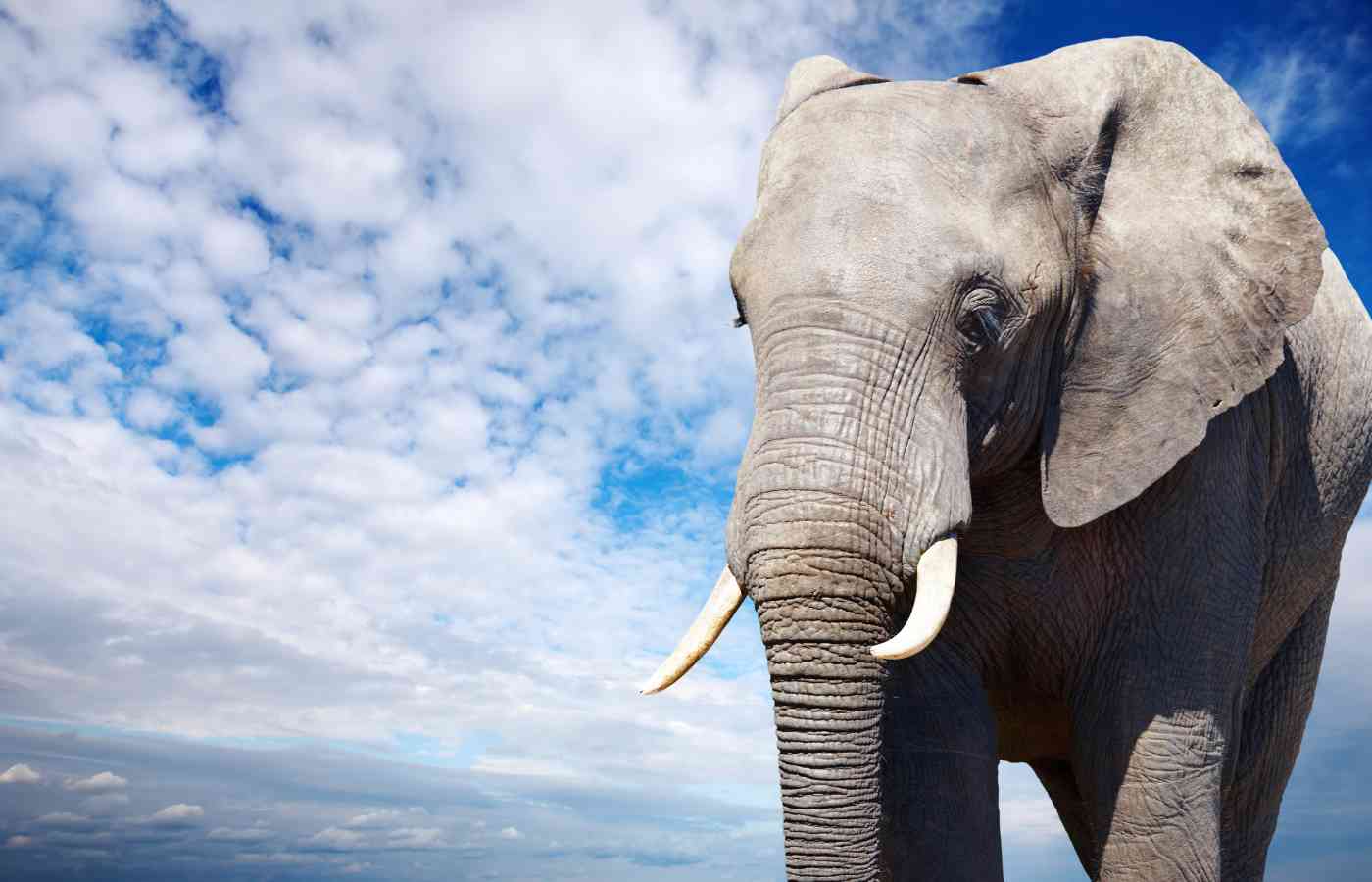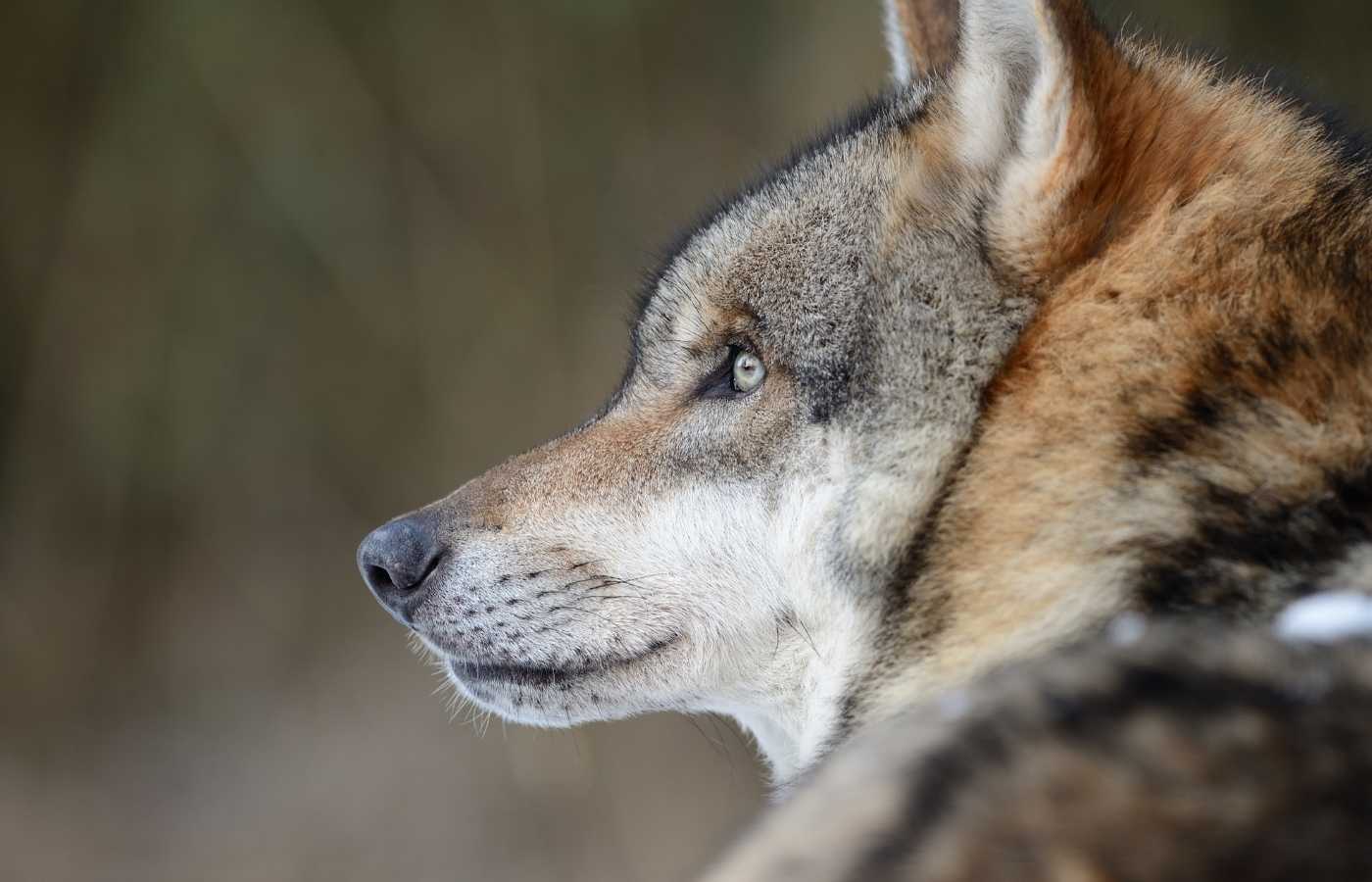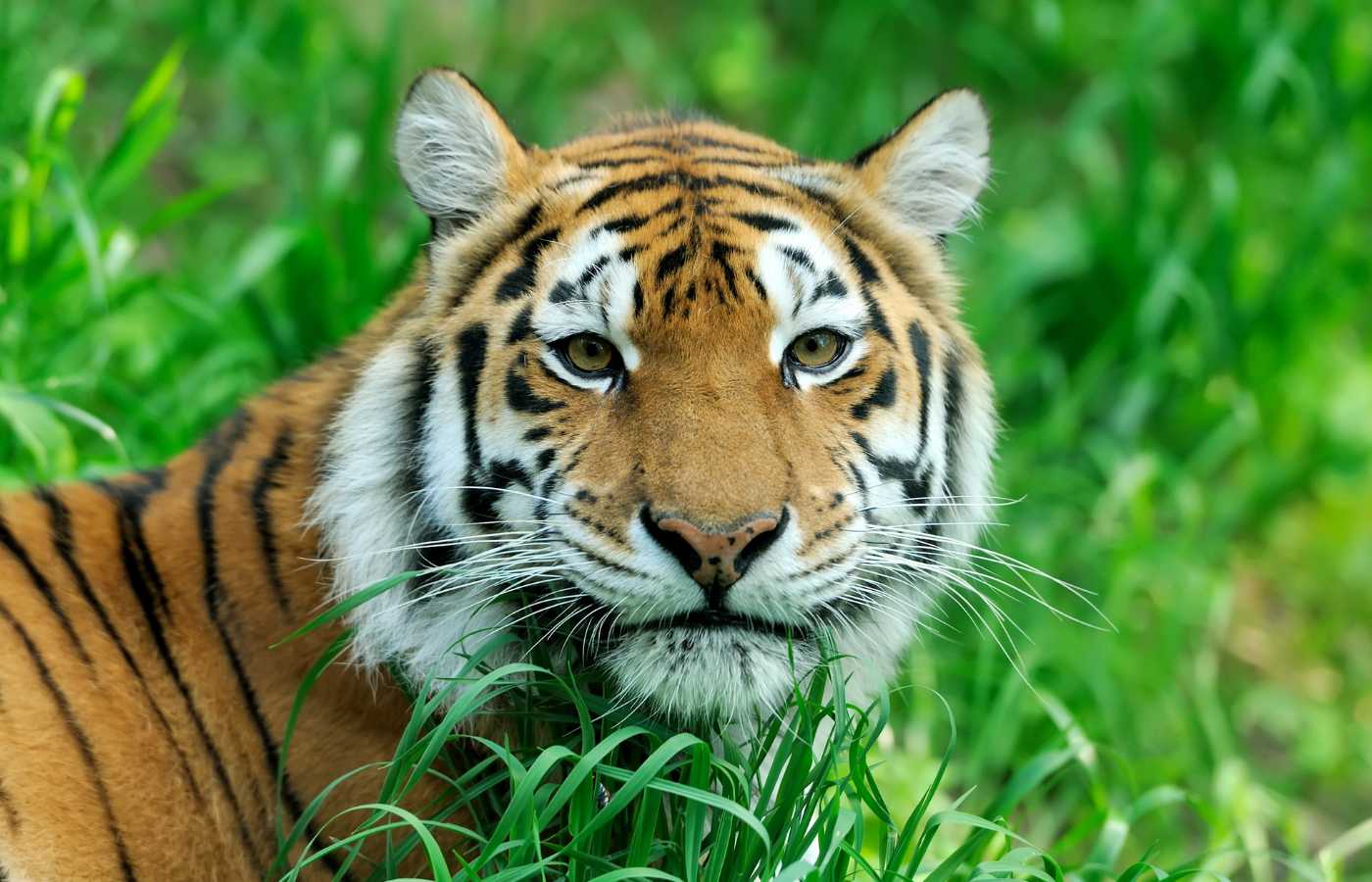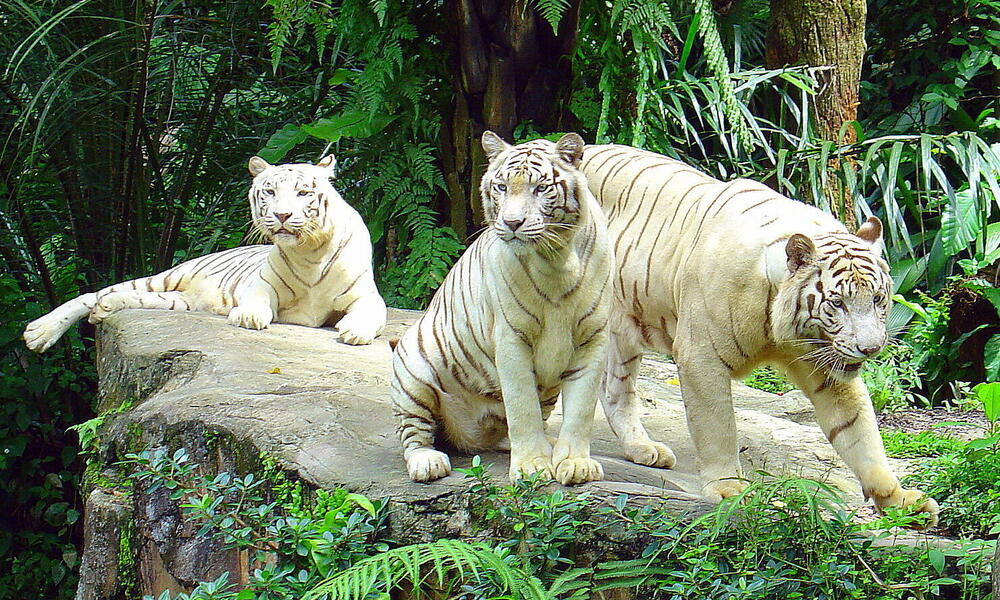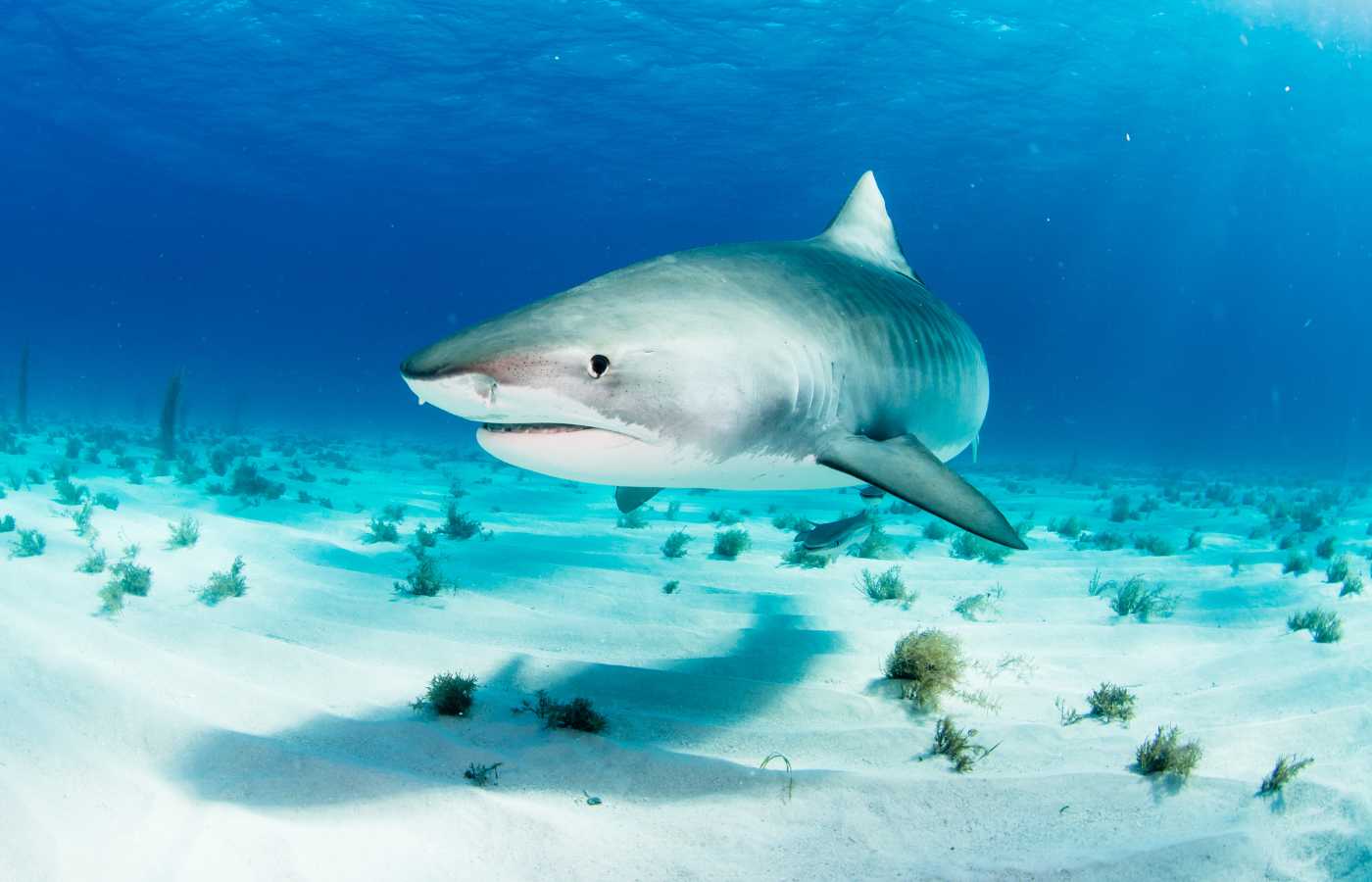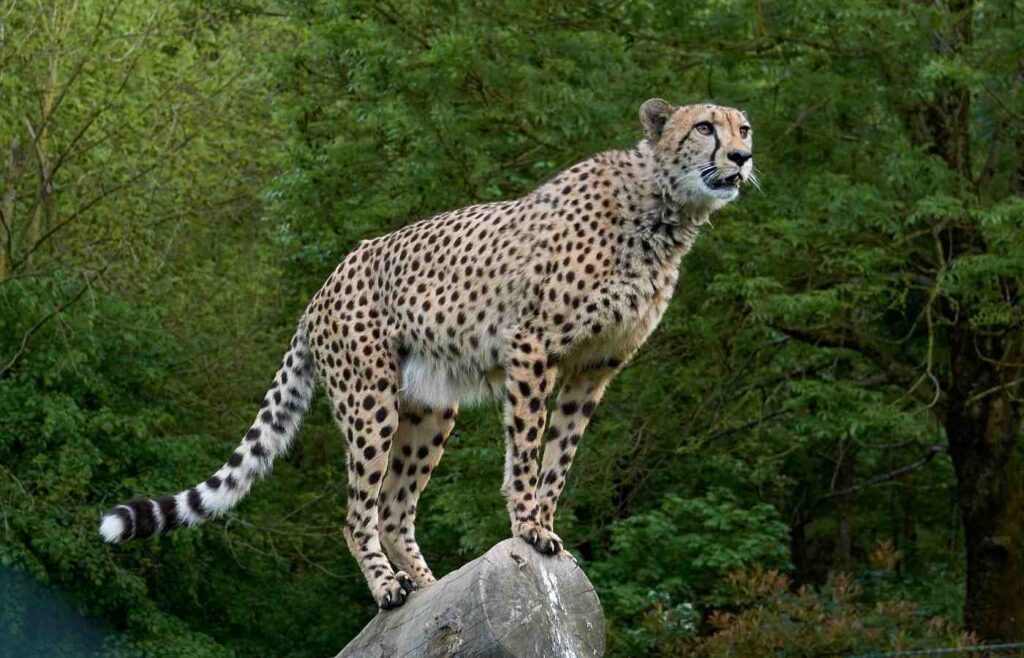
December 4th is International Cheetah Day!
What better way to celebrate these incredible cats than by learning some interesting facts about them?
In this article, you’ll learn cool cheetah facts like how fast they can actually run, why their baby cubs have full-body mohawks, how many black spots are on their body, and more.
75 Amazing Facts About Cheetahs
- The cheetah is the world’s fastest land animal. (Source: National Geographic)
- The cheetah is not the fastest animal in the world – that honor belongs to the peregrine falcon, which can fly 186 miles per hour.
- This incredible large cat can run 60 miles per hour – as fast as your car on the highway – with a top speed of about 70 miles per hour. That makes it the fastest mammal on earth. (Source: National Geographic)
- A cheetah normally catches its prey running at high speeds of about 30 miles per hour. (Source: National Geographic)
- Cheetahs can accelerate to 60 miles per hour in just 3 seconds.
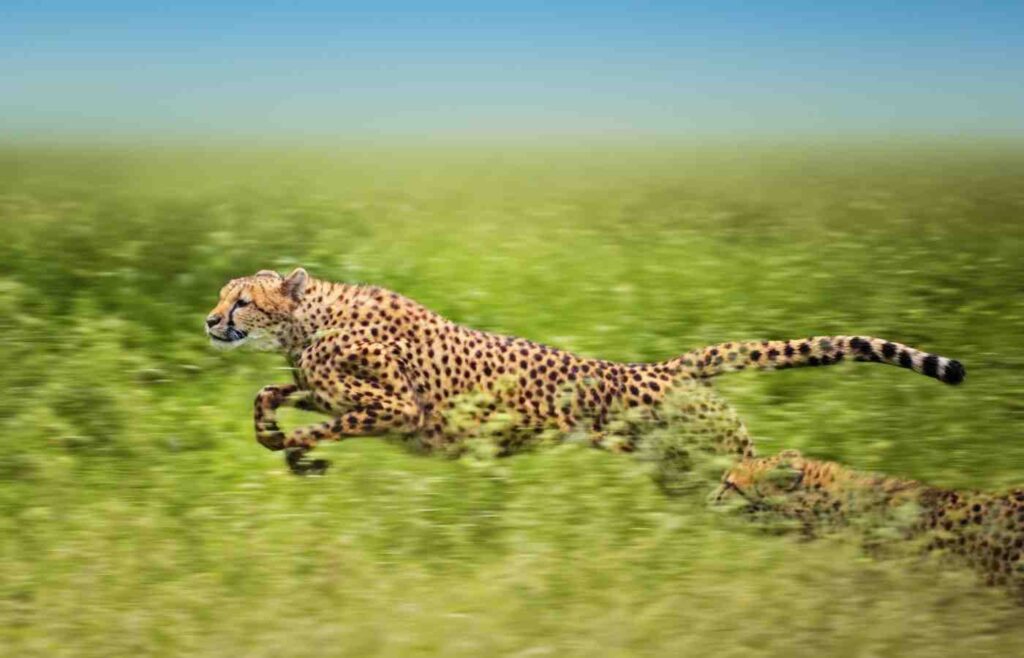
- A typical cheetah chase is about 250 meters long and lasts less than a minute.
- A cheetah needs to breathe at 150 breaths per minute while running at full speed.
- After a chase, a cheetah needs 30 minutes to catch its breath before it can eat. (Source: National Geographic)
- A cheetah’s typical stride covers about 21 feet. (Source: cheetah.org)
- A cheetah’s feet only touch the ground twice during each stride, making it look like it’s flying!
- A cheetah lives up to 14 years in the wild and 20 years in captivity. (Source: National Geographic)
- A group of cheetah’s is called a “Coalition”.
- There are five subspecies (types) of cheetahs: Northwest African Cheetah, South African Cheetah, Asiatic Cheetah, Sudan Cheetah, and the Tanzanian Cheetah
- The scientific name for cheetah is acinonyx jubatus. Acinonyx means “no move claw” in Greek, a reference to their non-retractable claw.
- The word “Cheetah” is derived from the Hindi word “Chita” meaning “spotted one”.
- Cheetahs are solitary animals and prefer to live alone.
- Cheetahs are considered big cats (alone with lions, tigers, leopards and jaguars) because of their size, strength, and predatory behavior.
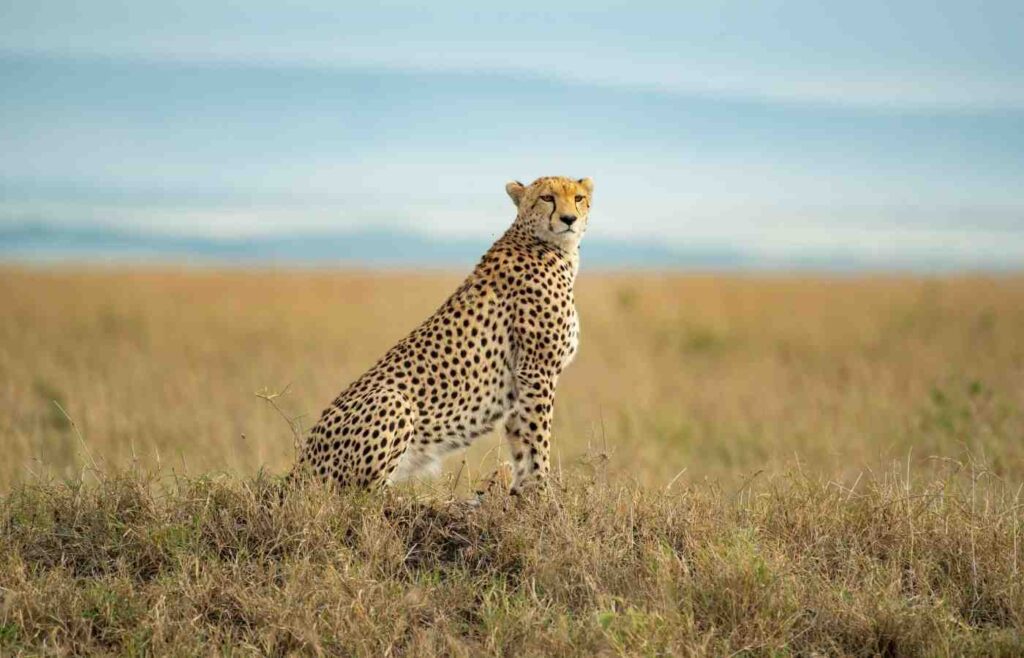
- Cheetahs live in Eastern and Southern Africa.
- While most cheetahs live in Africa, there are a few still living in Iran.
- Cheetahs prefer to live in open grassland, but can live in many different habitats.
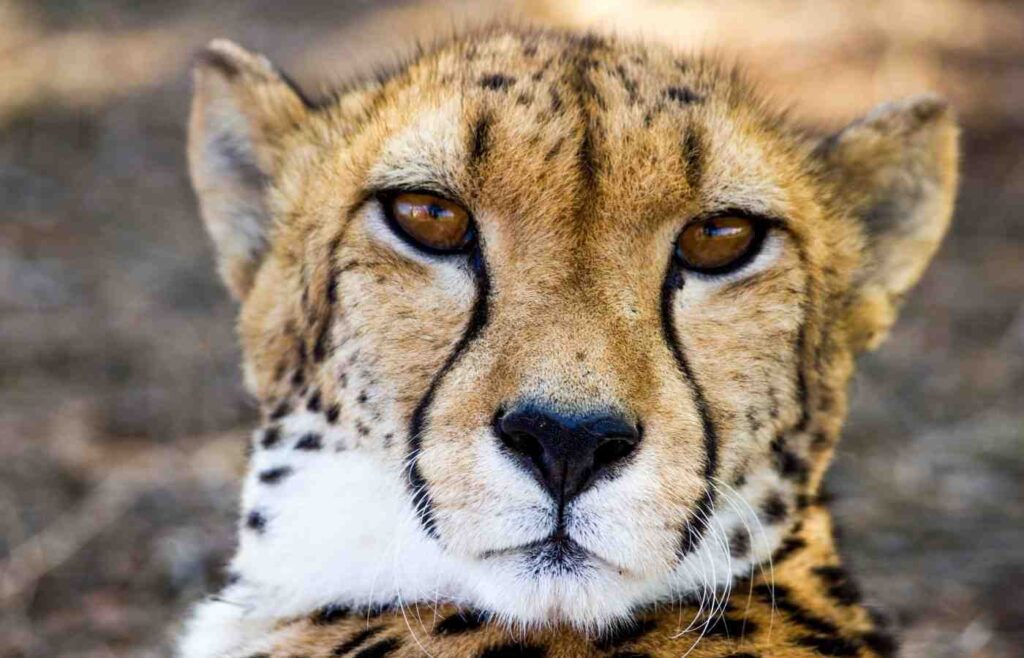
- Cheetah’s fur coats are an orange-yellowy-brown color with black spots. (Source: National Geographic)
- Cheetah’s have spotted skin. The black spots on a cheetah’s fur are also on their skin! (Source: cheetah.org)
- Black lines start at the cheetah’s eyes and run like tear lines down to both sides of their mouths. (Source: National Geographic)
- The tear marks on a cheetah help reflect the sun’s glare during the day. (Source: cheetah.org)
- The black tear stripes also help the cheetah aim and stay focused on their prey. (Source: cheetah.org)
- A cheetah’s fur coat helps it camouflage in tall, dry grass. (Source: National Geographic)
- A cheetah’s muscular tail helps control their steering and keep their balance when running very fast. Its long tail acts like a boat’s rudder.(Source: cheetah.org)
- A cheetah can grow up to seven feet long, including its body and tail. (Source: National Geographic)
- A cheetah’s body can weigh up to 143 pounds. (Source: National Geographic)
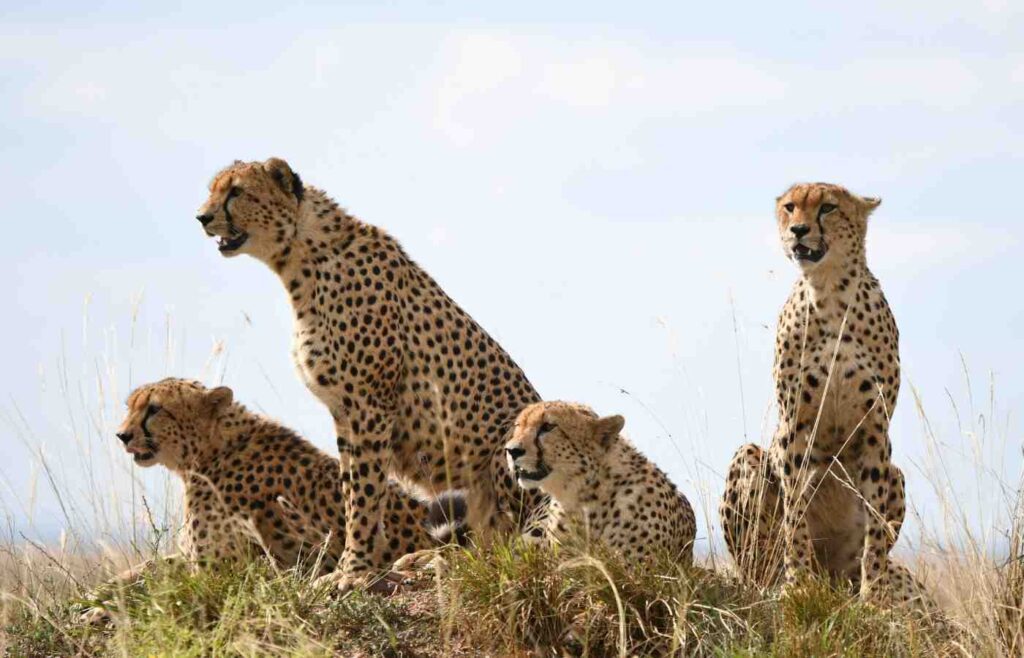
- An adult cheetah stands around 30 inches tall.
- A cheetah’s long legs and flexible spine allows it cover about 30 feet in one stride. (Source: National Geographic)
- Cheetah’s have excellent eyesight and a wide field of vision. In fact, they can see up to 3 miles in detail.
- While they have amazing eyesight, they lack the special night vision that other cats have. This poor night vision means they hunt during the day.
- They have large nostrils to increase the flow of oxygen. (Source: treehugger.com)
- A cheetah’s claws are semi non-retractable, and they give it traction when running. Kind of like football or soccer cleats!
- A cheetah has hard foot pads that feel like rubber on a tire, giving them good grip on the ground when they run.
- A cheetah’s spots are more round than a leopards. You can also tell the difference between a cheetah and a leopard because of a cheetah’s tear-streaked face, which a leopard does not have.
- A cheetah has between 2,000-3,000 spots on its body.
- Cheetahs are carnivores, which means they eat meat.
- Cheetah’s prefer to eat smaller animals like antelope, hares, impalas, wildebeest calves, and gazelles.
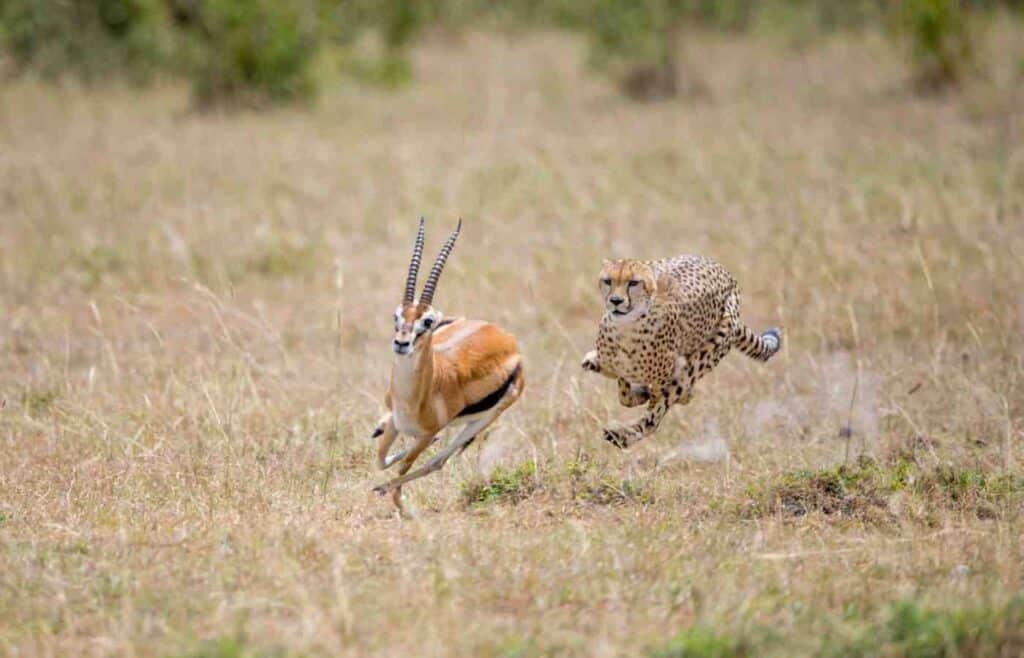
- Cheetahs usually chase down their prey and then bite its throat to suffocate and kill it.
- Cheetahs have to sneak up on their prey. They can only sprint for 15 seconds before they overheat and have to stop.
- Cheetahs hunt during the day to avoid lions who prefer to hunt at night.
- Cheetahs do not hunt daily. They usually hunt once every 2-4 days.
- After cheetahs catch their prey (food), they bring it to a shaded hiding place so other animals don’t see them eating it.
- Cheetahs do not like to fight. They will give up their prey if a larger, more aggressive animal like a lion or a vulture approaches them.
- A cheetah’s predators are lions and hyenas.
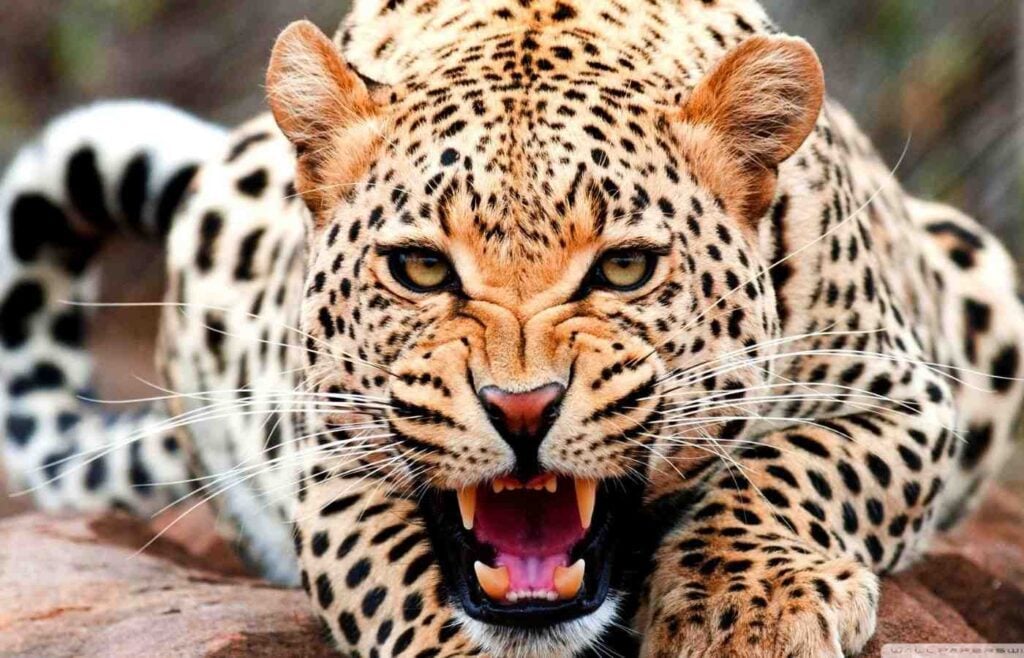
- Cheetahs are the only big cat that does not roar.
- Cheetahs purr! You can hear them purr here: https://cheetah.org/kids/cheetah-facts/
- Cheetahs can purr while both inhaling and exhaling.
- Cheetahs growl when they face danger.
- Cheetahs bark when communicating with each other.
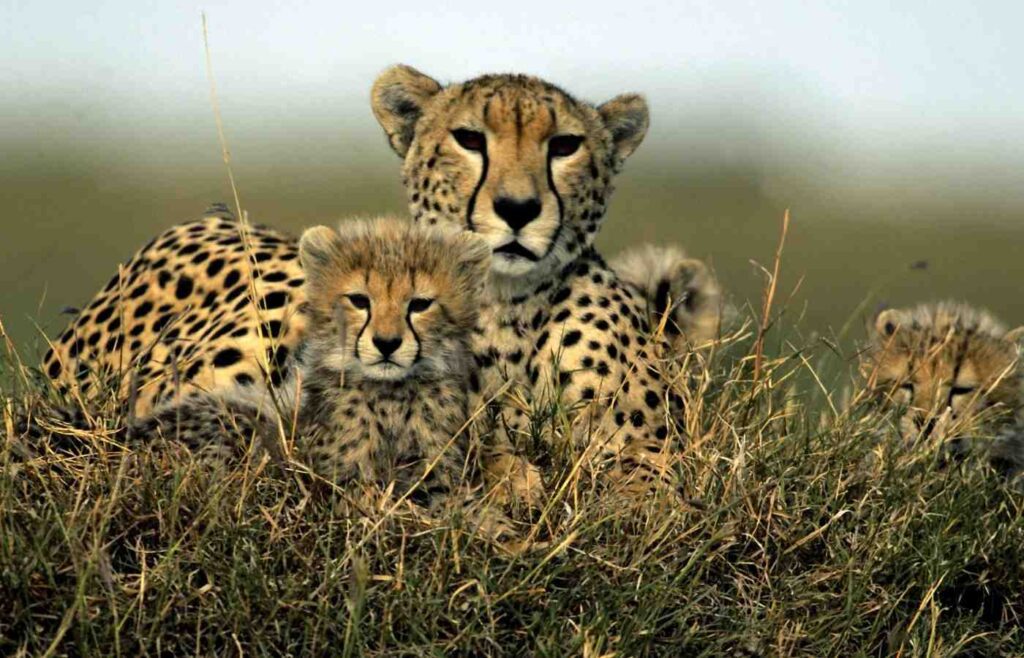
- A baby cheetah is called a cub.
- Cubs are easily hunted and usually do not survive after the first year. They have a high mortality rate of about 90%.
- A mother cheetah looks after cubs until they are about two years old.
- Cubs learn to hunt in part through play.
- Young cheetahs hunt in pairs.
- Baby cheetahs have a full body mohawk called a mantle. This long tall hair helps them blend into tall grass and stay safe from predators like lions and hyenas.
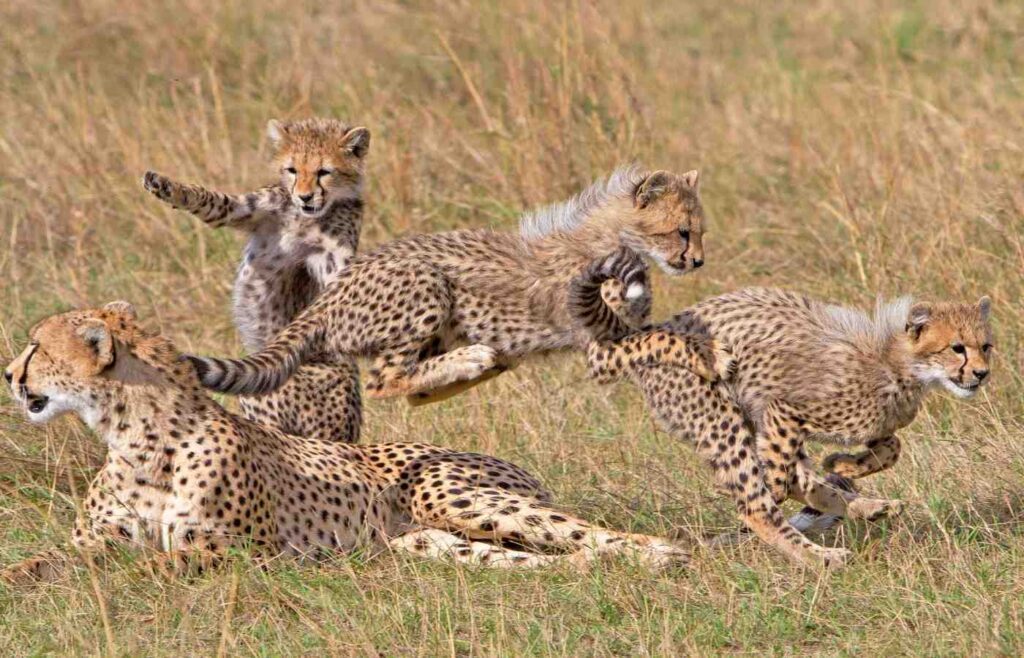
- A mother cheetah can have 2-8 cubs per litter. Most litters have 3-5 cubs.
- Female cheetahs live alone unless she is caring for her cubs.
- At birth, cheetah cubs are blind.
- Cheetah cubs get their eyesight within 10 days.
- Baby cheetahs get teeth around three weeks old.
- Within 6 months of birth, cubs reach half their adult size.
- Baby cheetahs learn to hunt by following their mother around.
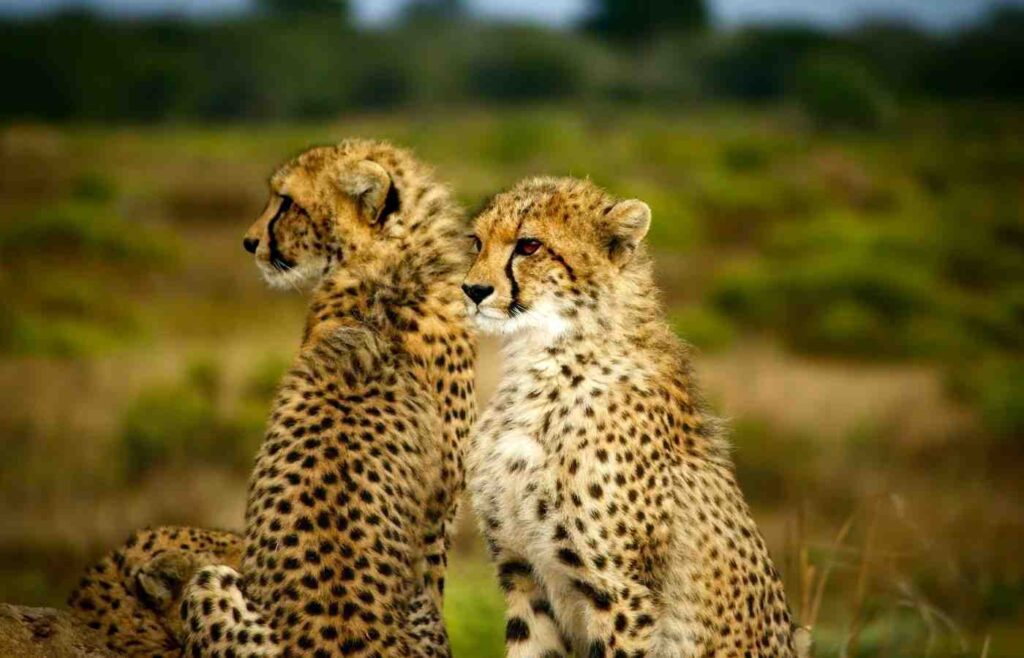
- Brother cubs stay together for a long time to hunt in small groups. They can catch larger prey like zebras and wildabeasts when they hunt together.
- Female cubs eventually leave the group to live a solitary life.
- Baby cheetahs nurse for approximately three months.
- Baby cheetahs can begin eating meat when they are 3 weeks old.
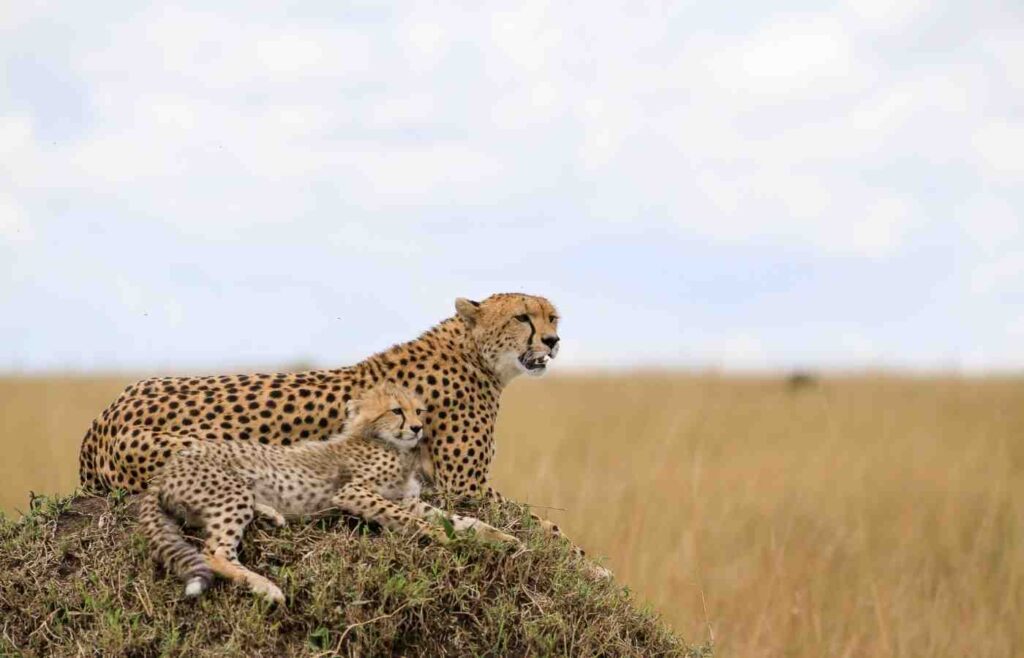
- Cheetahs are in danger of extinction because of loss of habitat and lower numbers of their prey. This means there are not enough small animals for them to eat.
- Cheetahs are the most endangered big cat in Africa.
- In 1900, there were more than 100,000 cheetahs in the world.
- The cheetah population is down to 7,500 in the wild.
- Cheetahs can go up to four days without water.
- Cheetahs sleep 12 hours a day. Must be all that running that makes them tired!
Frequently Asked Questions About Cheetahs
Are cheetahs endangered?
Yes, cheetahs are in danger of extinction because of loss of habitat and lower numbers of their prey. This means there are not enough small animals for them to eat. Cheetahs are the most endangered big cat in Africa. In 1900, there were more than 100,000 cheetahs in the world. The cheetah population is down to 7,500 in the wild.
How fast do cheetahs run?
A cheetah can run up about 60 miles per hour with a top speed of about 70 miles per hour. The cheetah is the world’s fastest land animal. Cheetahs can accelerate to 60 miles per hour in just 3 seconds. A cheetah normally catches its prey running at high speeds of about 30 miles per hour. (Source: National Geographic)
The cheetah is not the fastest animal in the world – that honor belongs to the peregrine falcon, which can fly 186 miles per hour.
Where do cheetahs live?
Cheetahs live in Eastern and Southern Africa. While most cheetahs live in Africa, there are a few still living in Iran. Cheetahs prefer to live in open grassland, but can live in many different habitats.
What do cheetahs eat?
Cheetahs are carnivores, which means they eat meat. Cheetahs prefer to eat smaller animals like antelope, hares, impalas, wildebeest calves, and gazelles.
What do cheetahs sound like?
Cheetahs are the only big cat that does not roar. But cheetahs do purr, both while inhaling and exhaling. Cheetahs growl when they face danger and bark when communicating with each other.
Do cheetahs roar?
No, cheetahs are the only big cat that does not roar. But cheetahs do purr, both while inhaling and exhaling. Cheetahs growl when they face danger and bark when communicating with each other.
How do cheetahs hunt?
Cheetahs usually chase down their prey and then bite its throat to suffocate and kill it. They have to sneak up on their prey because they can only sprint for 15 seconds before they overheat and have to stop. Cheetahs hunt during the day to avoid lions who prefer to hunt at night. Cheetahs do not hunt daily. They usually hunt once every 2-4 days. After cheetahs catch their prey (food), they bring it to a shaded hiding place so other animals don’t see them eating it. Cheetahs do not like to fight. They will give up their prey if a larger, more aggressive animal like a lion or a vulture approaches them.
What preys on cheetahs?
A cheetah’s predators are lions and hyenas.
We hope you loved this list of 75 cool cheetah facts as much as we loved putting it together! To help this endangered species, head to cheetah.org.
You may also be interested in:
- 50 Mind-Blowing Monkey Facts Your Kids Will Love
- Black Panther Facts for Kids
- Red Panda Facts For Kids
- 50 Interesting Facts About Snakes For Kids
- 25 Surprising White Tiger Facts For Kids
- 50 Mind-Blowing Mars Facts for Kids
- Emperor Penguin Facts for Kids
- Grey Wolf Facts for Kids
- Thanksgiving Facts for Kids
- Snow Facts for Kids
- Rainbow Facts for Kids
- 100 Mind-Blowing Facts About Elephants
- 50 Amazing Rhino Facts for Kids
Calie Herbst, Editor-in-Chief of Milwaukee With Kids, has spent over a decade combining her experiences as a parent of three to create a hub for Milwaukee’s family adventures.
Her decade-long teaching career in Milwaukee Public Schools and academic background, including a Master’s in Teaching from Marquette University and dual B.A.s in Sociology and Spanish from the University of Wisconsin – Madison, fuel her passion for inclusive and engaging family content.
Calie is also a recognized voice in local media, contributing to WISN Channel 12 News, WTMJ Wisconsin Morning News, Fox 6’s Real Milwaukee, and B93.3.
Discover more about Calie’s journey and editorial approach on her About Page and Editorial Policy Page.




